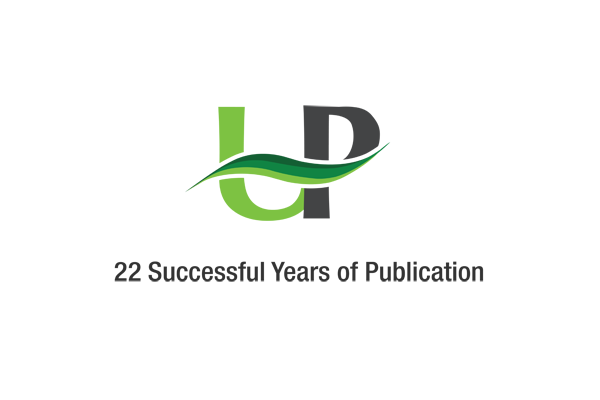
Green Building Code To Secure Pakistan’s Water Future; Experts Urge Strict Enforcement
Sumaira FH Published August 02, 2025 | 04:10 PM

ISLAMABAD, (UrduPoint / Pakistan Point News - 2nd Aug, 2025) In a long-awaited and forward-looking step, Pakistan's Federal cabinet has approved the Green Building Code of Pakistan—marking a turning point in the nation’s climate resilience journey. By mandating rainwater harvesting in all new construction, this landmark policy elevates a once-overlooked survival strategy into a national tool for environmental stewardship. From the parched deserts of Thar and Cholistan to the strained water systems of expanding cities, this bold move signals a commitment to securing Pakistan’s future against the twin threats of climate change and water scarcity.
With 12 million hectares, nearly 40%, of Pakistan’s cultivable land relying solely on rainfall, rainwater harvesting has historically been a lifeline for rural communities. Now, as it becomes a mandated component in residential, commercial, and industrial infrastructure, this ancient technique is re-emerging with renewed relevance, blending traditional wisdom with cutting-edge policy.
Experts have welcomed this national mandate as a long-overdue shift toward sustainable water management. Dr. Bashir Ahmed, Director of the Climate Energy & Water Research Institute (CEWRI), talking to APP urges a return to local knowledge, now reinforced by national policy,“Rainwater harvesting is not new. What’s new is our urgency. The Green Building Code gives these systems legal teeth—now it’s time for mass adoption.”
The newly approved Rainwater Harvesting Provisions for the Building Code of Pakistan, now part of Pakistan Engineering Council (PEC) Bye-Laws, make it mandatory for all new buildings to incorporate systems that collect, filter, and reuse rainwater. This applies across residential, commercial, and industrial sectors—signaling a significant pivot in Pakistan’s approach to water conservation.
This Code emphasizes rooftop rainwater harvesting systems, green roofs and solar integration, eco-friendly construction materials, and Building Information Modeling (BIM) for efficient energy and water use. These measures aim to reduce dependency on overstretched municipal water supplies, recharge depleted groundwater tables, and promote climate-resilient infrastructure.
The potential of rainwater harvesting has long been evident in Pakistan’s drylands. In the Cholistan Desert, home to 0.1 million people and 2 million livestock, a network of 110 rainwater reservoirs stores 440 million gallons of rain annually—saving an estimated Rs. 6 billion in avoided migration and water trucking costs. Similarly, in Thar, with its population of 1.5 million and 6 million livestock, the scarcity of water has historically led to seasonal displacement, high infant mortality, and malnutrition.
But with scientific innovation, like deep tube wells, saline agriculture, and grassland development across 500 acres—these communities are witnessing a slow but significant shift toward resilience.
The national mandate to implement rainwater harvesting systems could now bring such benefits to urban populations as well, particularly in water-scarce cities like Karachi, Quetta, and Islamabad.
Pakistan’s rainwater harvesting strategy relies on two main techniques: rooftop harvesting, where rain is collected from rooftops, filtered, and stored in underground or overhead tanks—now a key feature in building compliance, especially for multi-story structures; and surface runoff harvesting, commonly used in rural or peri-urban areas, which channels rainwater from open spaces and roads into reservoirs or aquifers for groundwater recharge and agricultural use.
Together, these techniques reduce pressure on both surface and groundwater resources, enabling water reuse and conservation in both domestic and agricultural contexts.
With rapid urbanization and groundwater depletion, especially in cities like Lahore and Rawalpindi, water harvesting systems are not a luxury but a necessity. Rainfall patterns are becoming more erratic. Harvesting even small amounts can help manage urban flooding, heat island effects, and drought stress. Rainwater systems are cost-effective, reduce municipal dependency, and prevent soil erosion and stormwater runoff, enhancing urban biodiversity.
Innovative solutions, such as solar water generators developed at King Abdullah University of Science and Technology, offer hope for even more water-stressed regions. These devices extract 2–3 liters of clean water per square meter per day from air humidity, operating entirely on solar power—ideal for remote or off-grid areas.
Dr. Ejaz Ahmed, environmentalist, adds:
“Urban groundwater is declining at an alarming rate. Harvesting rainwater is one of the few immediate tools we have for recharge. Projects in Islamabad have already shown encouraging results.”
Both experts emphasize that rainwater harvesting systems must be well-maintained, regulated, and community-owned to be effective.
The inclusion of rainwater harvesting in the national building code marks a policy breakthrough, turning what was once a rural coping strategy into a cornerstone of climate-smart development. This is not just about saving water; it’s about securing livelihoods, reversing desertification, and building cities that are smarter, greener, and more resilient.
As Pakistan faces increasing climate stress—from floods to droughts—rainwater harvesting stands out as a low-tech, high-impact solution. With the Green Building Code in place, the opportunity is clear: integrate rainwater systems in every building, empower communities with knowledge, and invest in a future where every drop counts.
Recent Stories

Eleven horses line up in Netherlands for 8th leg of UAE President’s Cup for Pu ..

Google launches 'Deep Think' for AI Ultra subscribers

Italy to start aid airdrops into Gaza August 9

Mohammed bin Rashid boards Etihad Rail passenger train for journey between Dubai ..

Iraq's PM launches construction works of phase one of Second Beiji Gas-Fired Pow ..

Japan experienced hottest July for 3rd year, 2.89 C above average

SpaceX launches joint astronaut crew to ISS in NASA's Crew-11 mission

22 Palestinians martyred in Israeli strikes across Gaza

China clarifies tax incentives for foreign investors reinvesting dividends

Currency Rate In Pakistan - Dollar, Euro, Pound, Riyal Rates On 2 August 2025

Today Gold Rate in Pakistan 02 August 2025

Russia:120 aftershocks registered in Kamchatka in past 24 hours
More Stories From Pakistan
-
Over 1.6 mln children forced into labour in Sindh: Survey reveals
6 minutes ago -
Green Building Code to secure Pakistan’s water future; experts urge strict enforcement
6 minutes ago -
Degree inflation crisis, experts urge focus on skills over credentials
26 minutes ago -
Housing Ministry initiates 'Digital Public-Private Dialogue' to invite experts, general public feedb ..
36 minutes ago -
Fasting Buddha replica gifted to Bai Dinh Pagoda, Vietnam
46 minutes ago -
More daycare centers needed in federal capital: residents demand
56 minutes ago
-
Ahsan Iqbal meets Chinese Vice Foreign Minister Sun Weidong
56 minutes ago -
ICT Police conducts grand search operation in Tarnol, Golra areas; 40 suspicious individuals detaine ..
56 minutes ago -
Under PM’s directive, separate immigration counters for foreigners to be set up
56 minutes ago -
Calls for national dialogue on "Medico-Legal Forensic Justice, Gender-Based Violence, and Rights-Bas ..
1 hour ago -
Stray dog population raises alarm in G-8/1, CDA responds to concerns
1 hour ago -
Ceremony held to commemorate Police Martyrs day in Nawabshah
1 hour ago